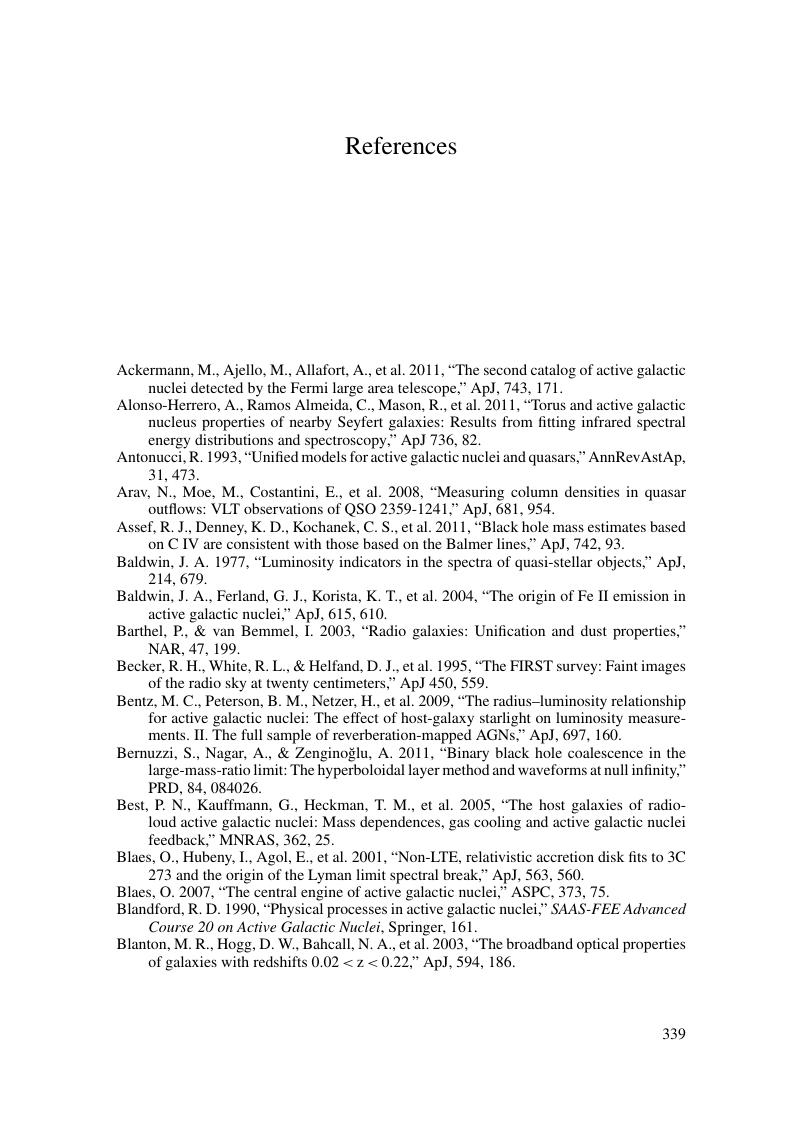Book contents
- Frontmatter
- Contents
- Preface
- 1 Observations of active galactic nuclei
- 2 Nonthermal radiation processes
- 3 Black holes
- 4 Accretion disks
- 5 Physical processes in AGN gas and dust
- 6 The AGN family
- 7 Main components of AGNs
- 8 Host galaxies of AGNs
- 9 Formation and evolution of AGNs
- 10 Outstanding questions
- References
- Index
- Plate section
- References
References
Published online by Cambridge University Press: 05 June 2013
- Frontmatter
- Contents
- Preface
- 1 Observations of active galactic nuclei
- 2 Nonthermal radiation processes
- 3 Black holes
- 4 Accretion disks
- 5 Physical processes in AGN gas and dust
- 6 The AGN family
- 7 Main components of AGNs
- 8 Host galaxies of AGNs
- 9 Formation and evolution of AGNs
- 10 Outstanding questions
- References
- Index
- Plate section
- References
Summary

- Type
- Chapter
- Information
- The Physics and Evolution of Active Galactic Nuclei , pp. 339 - 348Publisher: Cambridge University PressPrint publication year: 2013

